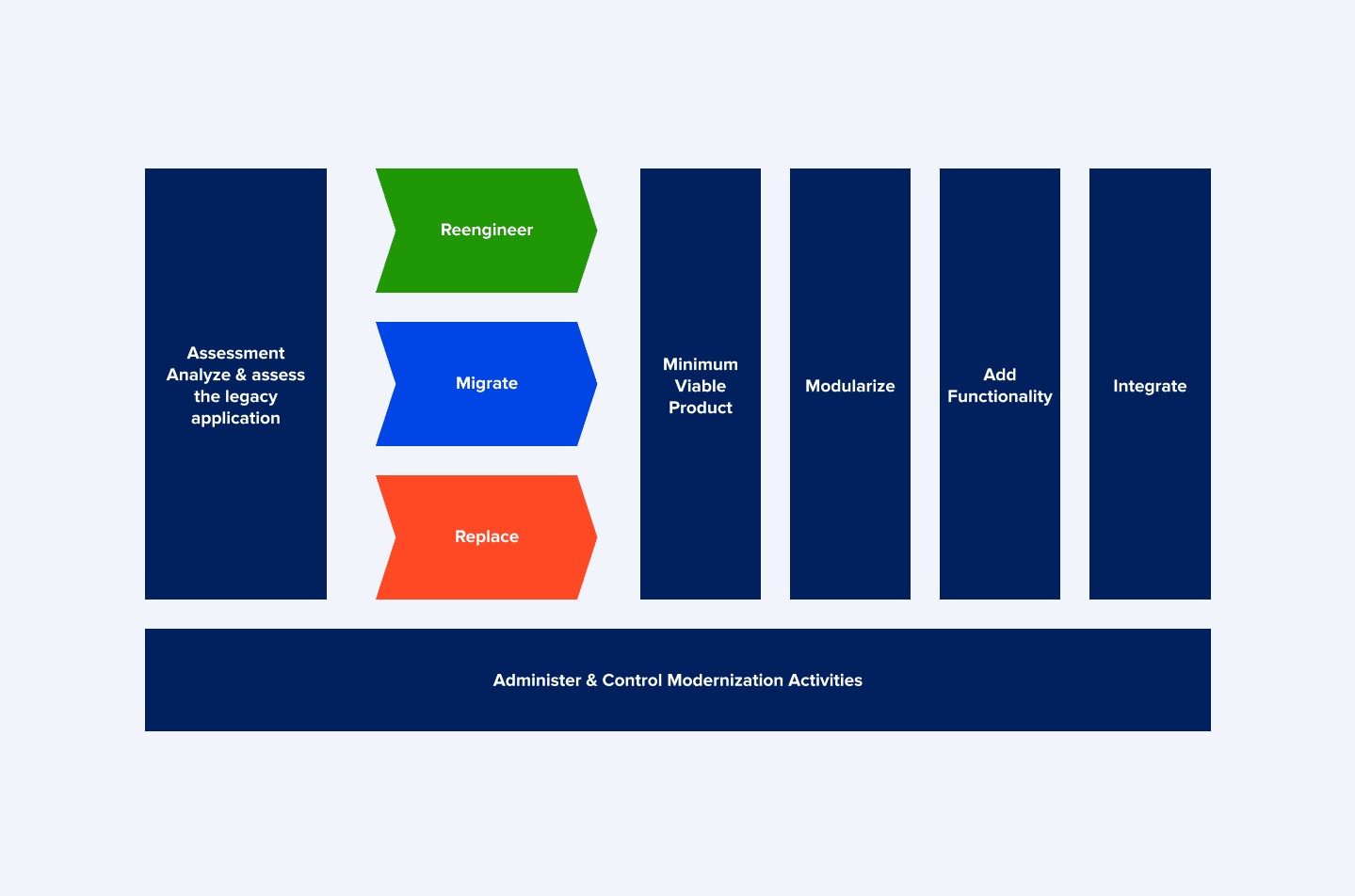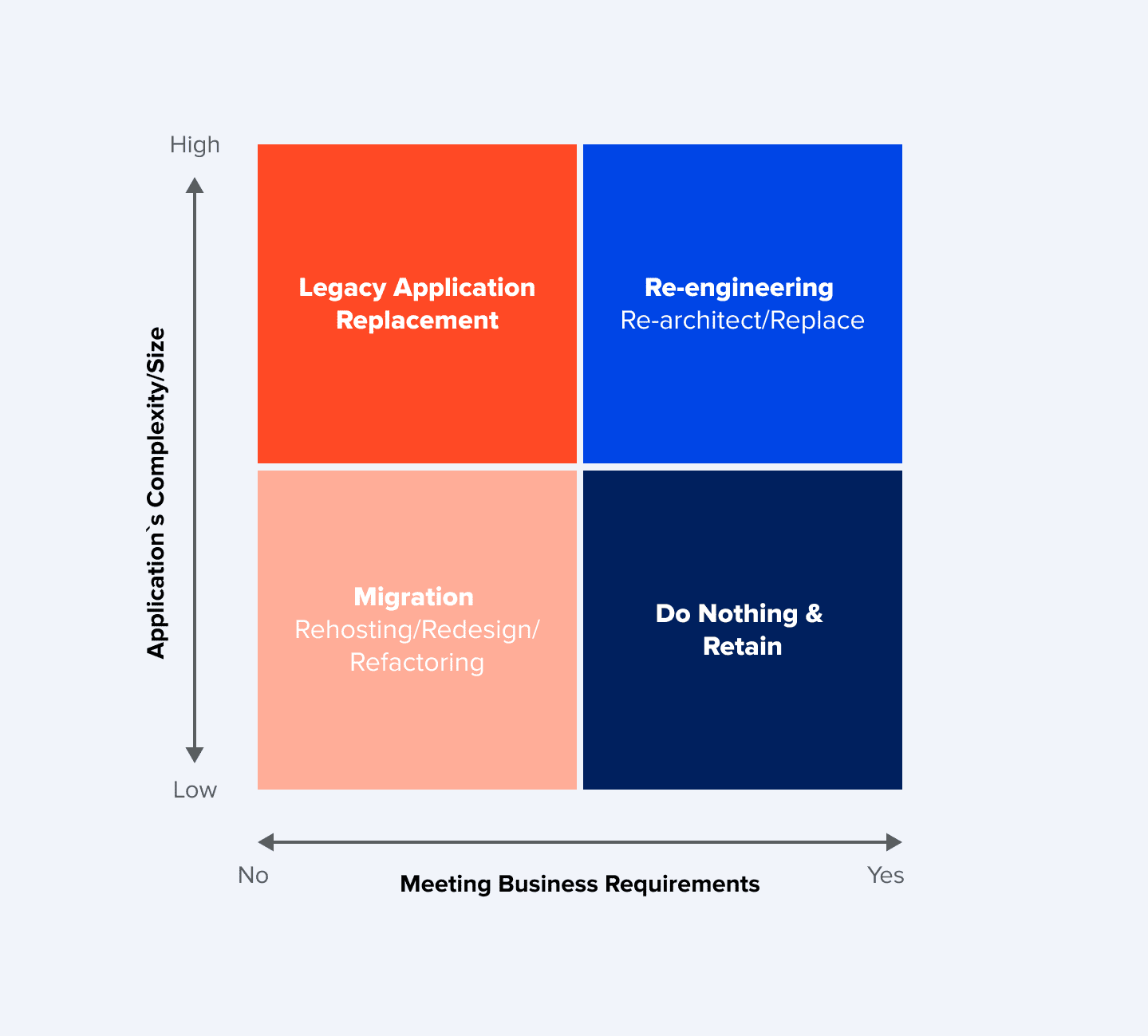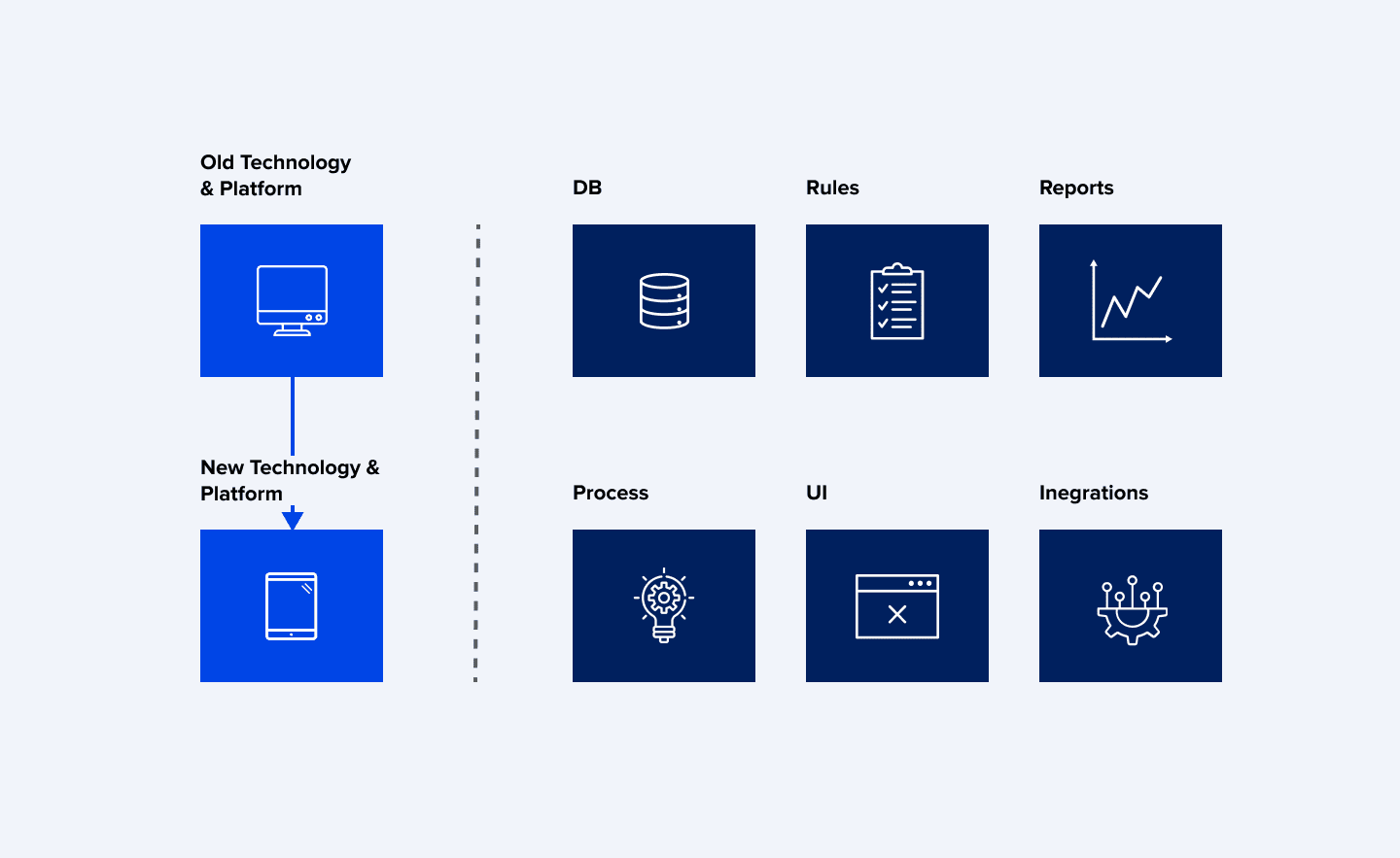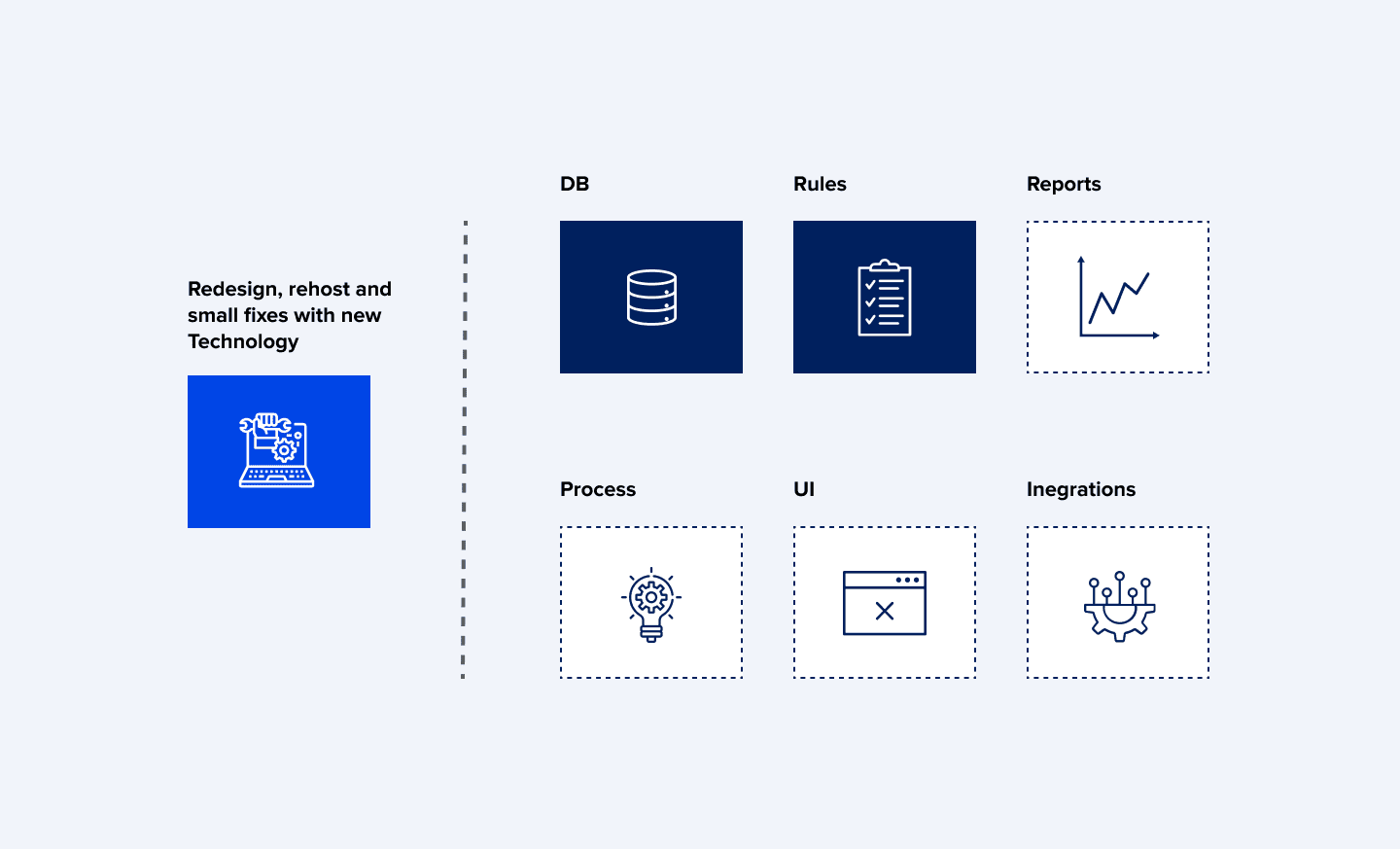
Why should I modernise my IT systems?
Software doesn’t appreciate in value, or get better with age like a family heirloom. But that’s not to say that your ageing systems don’t play a crucial in the smooth running of your business. So the saying, "out with the old, in with the new”, might be a bit overzealous. Legacy software modernisation can make the best of the systems that you already have without the need for complete redevelopment, keeping things ticking over while solving problems related to performance, flexibility and user experience.
Key advantages of legacy modernisation:
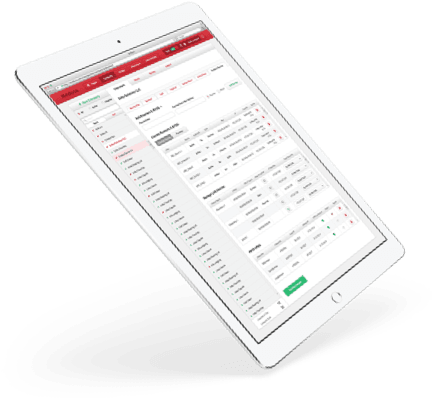
Read the case study
- You can optimise expenses. In 2019, the US government spent 80% of its IT budget on maintaining its legacy systems. Much of that expenditure was related to managing old code. Software updates allow businesses to optimise legacy code and reduce their overall operational costs in the long term.
- It helps improve operational efficiency. Legacy applications can be riddled with bugs and technical limitations that hinder overall performance. Software updates will reduce glitches, make your system work faster and lead to improved operation.
- It strengthens security. According to IBM, $3.86 million was the average cost of a data breach in 2020. Obsolete technology is more vulnerable to cyber threats and malware attacks, but up-to-date operating systems provide a safer version of software — which creates a better-protected computing environment.
Most common obstacles for legacy modernisation
Despite its many benefits, legacy modernisation presents its own unique challenges. Recent research by Advanced found that 74% of organisations that instigated the software modernisation process failed to complete it. Here are some of the most common reasons why:
- Compatibility of systems. Legacy code was written for a specific platform. When you migrate a legacy system, it's vital to ensure that existing data formats match the new platform.
- Modernisation of costs and terms. The bigger the application complexity, size and built-in business logic, the bigger the budget required for modernisation. And bear in mind that transitioning highly complex software can also be a time-consuming process.
- Skills shortage. Migrating data to a modern platform requires remarkable technical skill. So you’ll need the expertise to understand the dependencies within the software and deal with the countless lines of code involved. If you lack this expertise inhouse, you may want to consider using the help of a nearshore software development partner.
Software modernisation is a complicated, multi-layered, multi-step journey. So, here's a comprehensive checklist to go through, before you embark on it.
Step-by-step software modernisation process
1. Assess the condition of your legacy app
The evaluation process is an integral part of planning your modernisation roadmap. It will help you assess the current condition of your application and answer crucial questions including:
- Which parts of the outdated app still work?
- Which modernisation approach should you adopt?
- What's the objective of legacy modernisation?
- What’s the estimated time and cost of modernisation?
A comprehensive assessment comprises two parts:
- Business valuation — automated analysis which shows your app’s complexity and structure, system functionality and performance, and determines supported business processes and the quality of services offered.
- Technical knowledge — an examination of source code, app stability and redundancy determination. It also helps you plan strong design, and the proportion and complexity of the user interface, data sets and external interface.
2. Start with the minimum viable product (MVP)
Introducing new technologies with a MVP helps you carry out an upgrade while protecting the elements that matter most to your business and users. It filters product functions according to your needs. MVP strategy prevents you from overloading on new features and enables you to upgrade your apps in a more streamlined way.
This methodology facilitates software modernisation by stimulating presentations, processes, and screens, to check their value and validity. The MVP approach is used for upgrade approval and application testing before businesses kick-off the actual modernisation and global deployment.
3. Pick the best modernisation option for your business
Rigorous application evaluation can point you in the direction of the best modernisation approach to suit the needs of your business, helping you achieve the results you want more quickly.
Application re-engineering approach — this can be applied to applications which lack performance, security and other non-functional requirements, or need a complete conversion. The re-engineering approach can be implemented using a re-architect option or component replacement.
The application reconstruction approach enables you to introduce new technologies, like blockchain, IoT or VR, as well as platforms and systems, which match your business objectives and needs. Moreover, CRM, SCM and ERP can also be used as a replacement for a segment. Re-engineering of a legacy system creates a high-quality application with an optimised interface and better usability, performance, architecture, and innovative technologies.
Application migration approach — the aim of this approach is to fix minor flaws with news processes, code, or applications. Application migration varies from porting legacy software or web support to upgrading to a new version or platform. This may include re-hosting, re-factoring, or re-designing to improve performance or UX updates which don’t affect the business logic of legacy applications.
4. Plan data migration
The migration of critical business data requires proper planning. This is one of the most essential steps to take before application re-engineering and migration, since it helps prevent unwanted data leakage.
You can add additional functions to it using modules or third-party integrations, however, don’t try to upgrade everything at once. Undertaking a systematic step-by-step process when modernising your applications is less painful and won’t compromise your other business processes. Furthermore, it will provide your end-user with enjoyable application training, and effective learning builds success.
5. Introduce automation
Automated solutions are game-changing, making legacy application upgrades economically and technically feasible. Manually modifying an entire application — which might include numerous lines of code and multiple systems — can be inaccurate and sluggish.
Automated solutions won’t make your business fully automatic; they're applicable only to specific scenarios and play a particular role in modernisation. Application evaluation, cloud data migration, and deployment, for example, can be automated using tools currently available in the market.
Conclusion
There are a plethora of reasons to upgrade and make the most of your legacy applications, and many elements to consider before you do. Among them:
- consider cloud computing solutions
- make mobility and simplicity a priority
- review architecture
- adopt an evolutionary approach to modernisation
- break an application into segments
- develop documentation for future growth
Regardless of your preferred approach, software modernisation will allow your business to solve existing problems, speed-up productivity and will enable you to add essential business functions quickly. Whatever stage you are at in your application modernisation journey, you can consider partnering with an experienced software vendor to build a smart development team to help you deliver your requirements.
Contact us today to get your legacy systems working harder for you, so you can fully realise the benefits of new technologies.
Related Insights








The breadth of knowledge and understanding that ELEKS has within its walls allows us to leverage that expertise to make superior deliverables for our customers. When you work with ELEKS, you are working with the top 1% of the aptitude and engineering excellence of the whole country.

Right from the start, we really liked ELEKS’ commitment and engagement. They came to us with their best people to try to understand our context, our business idea, and developed the first prototype with us. They were very professional and very customer oriented. I think, without ELEKS it probably would not have been possible to have such a successful product in such a short period of time.

ELEKS has been involved in the development of a number of our consumer-facing websites and mobile applications that allow our customers to easily track their shipments, get the information they need as well as stay in touch with us. We’ve appreciated the level of ELEKS’ expertise, responsiveness and attention to details.

